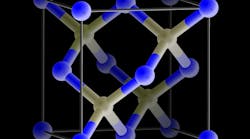The latest gallium-nitride (GaN) and gallium-arsenide (GaAs) die parts can deliver higher power levels than previous-generation solutions. When working with such devices, precision and consistency must be maintained throughout the die-attachment and assembly process. But many challenges are associated with the die-attachment process, such as contamination and the quality of pickup collets. In the tech brief, “Eutectic Die-Attach of GaN and GaAs MMICs,” SemiGen examines key factors that help determine if a eutectic die-attachment process is acceptable.
GaAs and GaN technology are essential for today’s applications. While GaAs and GaN die attachment can be performed using various methods, eutectic die attachment is one of the preferred approaches. The eutectic die-attachment process allows for a very reliable mechanical connection and an optimized thermal and electrical connection. These qualities are essential for the power and heat produced by the latest GaN power amplifiers (PAs) and maximize grounding for electrical performance.
Next, the tech brief explains some key die-attachment factors, leading off with a discussion on thermal considerations. The document notes the importance of having a matching coefficient of thermal expansion (CTE) of the die, solder, and substrate, as that helps to prevent mechanical damage during thermal cycling.
The scrubbing technique, which is commonly used with eutectic die attachment, is also touched upon. This process involves the die being held with some force by a pickup collet. The bonder performs its “scrubbing” action while the solder is in its liquid state. Scrubbing can help to ensure a conformal solder layer and greater solder adhesion between the die base layer and the substrate/spreader. Key factors for a successful scrub include head force, scrub direction and path, scrub cycles, and scrub time, as well as the point in the reflow process where the scrub is performed.
The document examines the pitfalls of eutectic die attachment, such as die contamination. In addition, the plating of the die and die carriers must maintain integrity to ensure adequate wetting and adhesion quality. The tech brief concludes with a discussion on pickup collets.
SemiGen, 54 Grenier Field Rd., Londonderry, NH 03053; (603) 624-8311

